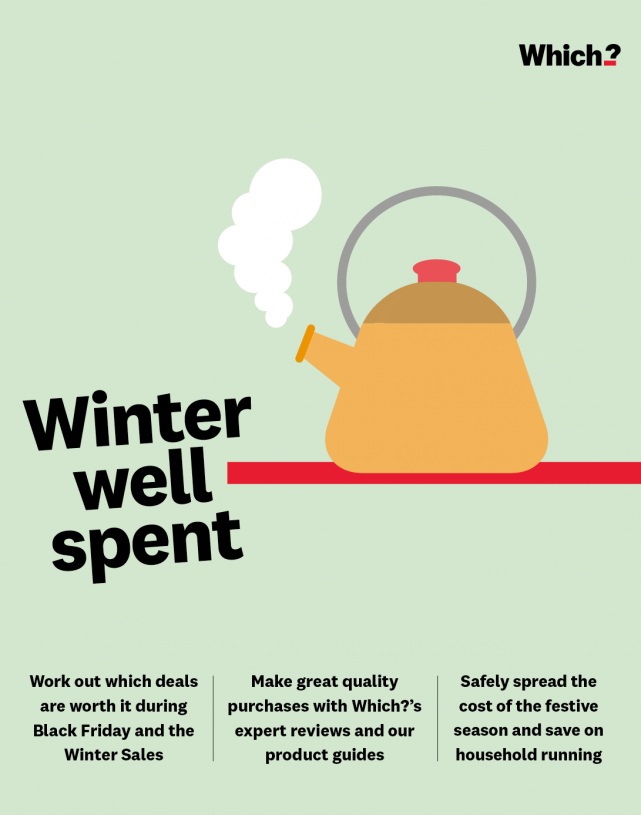User guide
Finding your way around the guide
To navigate between pages, click or tap the arrows to go forwards to the next page or backwards to the previous one. The arrows can be found either side of the page and at the bottom, too (circled in green, below).


Menu/table of contents
Click or tap on the three horizontal lines in the top-right of your screen to open the main menu/table of contents. This icon is always visible whether you're using a computer, tablet or smartphone. The menu will open on top of the page you’re on. Click on any section title to visit that section. Click the cross at any time to close the table of contents.
Text size
On a computer, you'll see three different sized letter 'A's in the top-right of your screen. On a smartphone or tablet these are visible when you open the menu (see above). If you’re having trouble reading the guide, click or tap on each of the different 'A's to change the size of the text to suit you.
Pictures
On some images you'll see a blue double-ended arrow icon. Clicking or tapping on this will expand the picture so you can see more detail. Click or tap on the blue cross to close the expanded image.
Where we think a group of images will be most useful to you, we've grouped them together in an image gallery. Simply use the blue left and right arrows to scroll through the carousel of pictures.
Links
If you see a word or phrase that's bold and dark blue, you can click or tap on it to find out more. The relevant website will open in a new tab.
Jargon
If you see a word or phrase underlined, click or tap on the word and small window will pop up with a short explanation. Close this pop-up by clicking or tapping the cross in the corner.
Help
On a computer, you'll see a question mark icon in the top-right of your screen. On a smartphone or tablet this is visible when you open the menu (see above).
Clicking or tapping on the question mark will open this user guide. It opens on top of the page you're on and you can close it any time by clicking or tapping the cross in the top-right corner.

Spread the cost securely
Stay savvy with your finances; choose safe ways to borrow money and discover easy ways to save on daily essentials.

The cost-of-living crisis has meant that some people have resorted to different ways to manage their spending. The popularity of ‘buy now pay later’ (BNPL) schemes has soared and credit card use is up. Meanwhile unsecured personal loans have become more expensive over the last year, and scammers are targeting those that might have been rejected for one. Here, we consider how to use credit cards, BNPL schemes and personal loans wisely. We also show you how to avoid fraud and what steps you can take if you have been scammed. Finally, we offer tips on how to save on your winter shopping.
Which? Money Savers is a collaborative community where you can find and share money-saving advice.
Have you got a money-saving hack to share? Do you want to find easy ways to reduce your bills? We’d love to hear your tips, and we have lots to share.
Borrowing and earning with a credit card
Having the right kind of credit card and using it wisely can be the cheapest way to borrow money. Other pluses of a credit card are:
- Protection under Section 75 and chargeback
- Earning cashback on your purchases
- Protection if you lose your card
- It improves your credit score.
When not to use a credit card
-
Paying for foreign currency – you’ll be charged a cash advance fee and maybe a higher APR too.
-
Third-party payment – you’ll lose Section 75 protection on items costing more than £100. This includes PayPal (not PayPal Credit), Google Wallet (not Google Pay), third-party sellers on Amazon and buy now pay later schemes.
-
Withdrawing cash – you’ll pay a withdrawal fee as well as a higher APR.
Cashback and reward credit cards
Cashback credit cards are a type of reward credit card that pays you a percentage of what you spend, either as credit on your bill or paid directly into your account. Other reward cards offer points that can be redeemed at certain retailers, often in the form of vouchers.
If you're planning on making a lot of purchases this winter, cashback and reward credit cards can be an excellent way to earn back from spending. Check out our round-up to see which cards offer the best rewards.
Using cashback and reward credit cards effectively
With a cashback or reward credit card, there are a few things to bear in mind to make sure you use them effectively. We've set out the golden rules below.
- Avoid borrowing – cashback and reward credit cards typically don't offer good rates for borrowing.
- Pay off the balance in full each month – this will ensure the interest you pay doesn't outweigh the rewards earned.
- Use them for everyday spending – the best cards offer rewards every time you make a purchase, so try to use them as much as possible.
Find out how much your cashback credit card could earn you, plus other advice with our credit card calculators guides.
Other types of credit card
While credit cards have lots in common, it’s possible to find one that’s more tailored to your needs. Which? has analysed hundreds of credit cards to find out which are best for situations such as spending abroad or for spreading the cost of a big purchase. Find out which credit cards are Which? Best Buys.
Short-term borrowing
Borrowing via a loan scheme is one way to spread cost, but it’s crucial to go into any of these with your eyes wide open. Here we look at personal loans and other forms of short-term borrowing such as 'buy now pay later’ schemes.
Should I take out a personal loan?
Unsecured loan: An unsecured personal loan can be a cheaper way to borrow larger sums of money, as interest rates tend to be lower. The interest rate is fixed for the duration of the loan, so you’ll know exactly what you’ll pay each month. The best rates on personal loans are usually on deals of over £7,500 taken out over five years or more.
Secured loan: This is a loan that is backed by your property, so your home could be repossessed if you’re unable to keep up with repayments. Also, secured loans have variable rates, so the amount you pay isn’t predictable. Their advantage is that you could borrow more, but you should tread carefully when considering one of these.
Read more about the cheapest deals on the market in our guide to the best personal loans.
Sign up to Which? Money to discover ways to make your money go further. We’ll help you to find the best deals, avoid scams and grow your savings.
Buy now, pay later (BNPL)
BNPL schemes are a form of short-term credit that have exploded in popularity in the past few years. Essentially, they allow you to pay for items in instalments or on one date in the future. They’re interest-free and typically last for six weeks or less.
This is a rapidly growing area, and while Klarna, Laybuy and Clearpay are the three largest providers in the UK, new companies constantly arise. None of the schemes are the same, so if you do decide to use one, make sure you’re clear how it works. They’re quick to sign up for and require minimal credit checks, which can lead to a spontaneous decision that doesn’t dwell on the prospect of missed payments.
Previous Which? research shows that some BNPL users don’t even realise they’re taking on debt. In fact, the speed and simplicity with which you can sign up to a BNPL scheme – usually a matter of a few clicks – contributed to users' misunderstanding.
If you can pass the tougher credit checks demanded by a credit card, then using a 0% credit card is a better option than a BNPL scheme. Spending on a credit card gives you both Section 75 protection (see p5) and the opportunity to escalate any complaints to the Financial Ombudsman Service.
Which? has been calling for urgent regulation of BNPL schemes for some time after uncovering concerns with how the schemes encourage impulse spending, how retailers promote the schemes online and how shoppers don't realise they are taking on debt.
Although the government committed to regulating the BNPL market, it was reported in July that plans could be shelved due to concerns some of the biggest providers could leave the UK market.
Rocio Concha, Which? director of policy and advocacy said: ‘The government must help those most in need by tightening regulation on buy now pay later schemes to stop unaffordable lending and ensuring essential businesses are doing everything in their power to ease pressures on household finances.’
Loan fee fraud: avoiding and reporting
Loan fee fraud is a scam where you’re asked for an upfront fee in order to take out a loan. Victims are contacted by scammers via text, email or telephone and are offered a non-existent loan. An upfront fee then needs to be paid, and in some cases more than one fee is requested. Victims are told that the fee acts as a deposit, admin fee, insurance or is required because of their bad credit history and will be refunded later.
You can avoid scams by doing your checks on the company; if you want to take out a loan, use the Financial Conduct Authority’s register to confirm that the lender is authorised. You can also contact the FCA’s consumer helpline on 0800 111 6768.
If you find that you have been scammed, report it immediately to Action Fraud. Suspicious websites should be reported to the National Cyber Security Centre.
Further ways to save when shopping
Using cashback sites
Cashback sites such as Quidco* and TopCashback* pay you a cashback reward when you click through from them to buy goods or financial products.
Browse these sites to see if there are any retailers you plan to shop with over the festive season. They can be a great way to earn money back on spending you already plan to do but just remember not to get thrown off chasing the cheapest deal for what you want to buy. A 5% cashback rate isn’t much of a saving if you can get an item 20% cheaper from another retailer.
Read our advice about how to make the most of cashback sites.
Scan your loyalty cards
Our research reveals you'll save between 50p and £10 for every £100 you spend with the loyalty schemes on offer today. However, these savings could easily be cancelled out if the shop's prices are higher than those of its competitors. Overall, it’s probably worth signing up to be a member of the schemes offered by shops you already use, so long as you are happy with them collecting data about your purchase history.
Most supermarkets offer points or rewards that are linked to how much you spend. It’s common to see lower prices, or deals for bulk buying, that are only offered to members.
Find out how Nectar, Tesco Clubcard, Boots Advantage and other popular loyalty cards compare – and how to get the most out of them.
*We link to a number of external websites where you can buy products or services that we feature on our site. We do this to make it easier for you to complete your purchase and to earn commission revenue that supports our not-for-profit mission.

